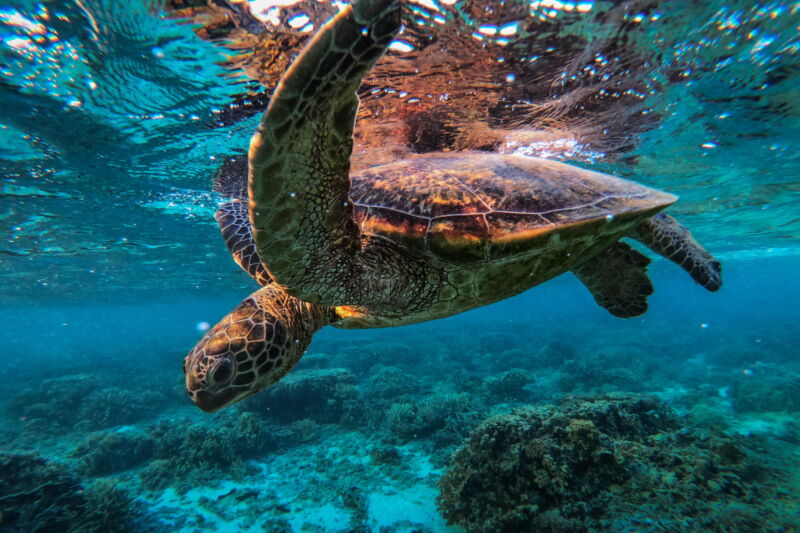Half of migratory species face extinction due to human activities

Enlarge / In the case of Great Barrier Reef green turtles, rising temperatures have been linked to changing sex-determination, with an increasing number of new hatchlings born female. (credit: Jonas Gratzer/LightRocket via Getty Images)
Humans are driving migratory animals-sea turtles, chimpanzees, lions, and penguins, among dozens of other species-towards extinction, according to the most comprehensive assessment of migratory species ever carried out.
The State of the World's Migratory Species, a first of its kind report compiled by conservation scientists under the auspices of the UN Environment Programme's World Conservation Monitoring Centre, found population decline, a precursor to extinction, in nearly half of the roughly 1,200 species listed under the Convention on Migratory Species (CMS), a 1979 treaty aimed at conserving species that move across international borders.
The report's findings dovetail with those of another authoritative UN assessment, the 2019 Global Assessment Report on Biodiversity and Ecosystem Services, that found around 1 million of Earth's 8 million species are at risk of extinction due to human activity. Since the 1970s, global biodiversity, the variation of life on Earth, has declined by a whopping 70 percent.